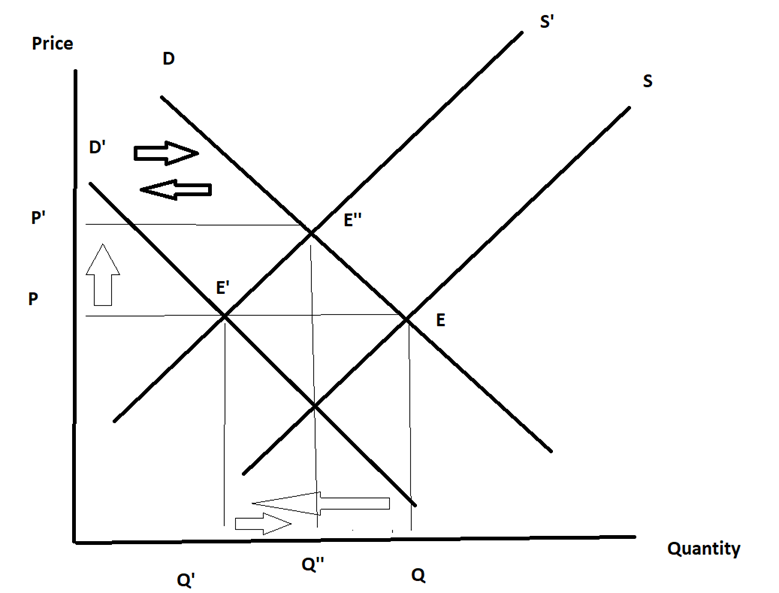As an example for the demand-driven but supply-caused
perspective, take airline tickets. When pandemic hit there was a total
annihilation of demand and supply, as nobody was allowed to fly. Afterwards,
supply partially recovered as operation of airlines was allowed, but demand was
suppressed, as nobody really wanted to fly given the associated conditions. This
state persisted until re-opening was in full swing. This brought rebound in demand
and with it also dramatic increase in prices. This can be seen in following figures:
left panel shows the development in quantity, while right shows the prices.
Is this increase in prices demand-driven or supply-driven?
Clearly, this corresponds to a demand-driven increase in prices, given that in
2022 increase in prices coincided with increase in quantities. But does it make
sense to assign increase in airline ticket prices to increase in demand? Sure,
it did come as a result of the rebound in demand. But at the same time, the
quantities remain well below their pre-pandemic levels, so they are not above
normal, which means that it cannot be straightforwardly concluded that extreme
prices are result of extreme demand.[1]
Rather, the story is probably as follows: re-opening led to
normalization of demand, maybe slightly above normal demand. This was
met with supply that was significantly lower than pre-pandemic normal, which
can be seen in how the quantities flat-lined once their reached 85%. As a
result, prices reached well above normal levels. While labeling inflation as
supply or demand driven is straightforward, labelling it as supply or
demand caused is somewhat harder. That said if one category has to be
chosen then I would certainly opt for supply. Why? Because it is the supply
which is further away from pre-pandemic normal.
The main point, then, is that with more refined terminology
we can have both demand-driven and supply-caused inflation labels. We can say
that the recent rise in flight ticket prices is driven by rebound in demand,
but that the abnormally high flight ticket prices are caused by shortfall in
supply.
I think this story of airline ticket prices applies more
generally. What we have been observing since beginning of 2021 onwards has been
normalizing demand hitting below normal supply, which led to above normal
prices. Together with airline tickets it applies to many travel-related
categories, albeit with some of them I would argue it is more about
(temporarily) above-normal demand. It also applies to cars, where it is harder
to argue that demand is higher than before pandemic. And in some sense it also
applied to euro zone energy, where demand was abnormally low during pandemic,
and then in rebounded to meat depleted supply; of course, later on a decrease
in supply became dominant driver.
[1] Of
course, lower than pre-pandemic quantities does not on its own imply that
demand was lower than normal, because we also have to contend with the supply
side of the story. Simply, output can be lower even with demand above pre-pandemic,
if decrease in supply was large enough.

